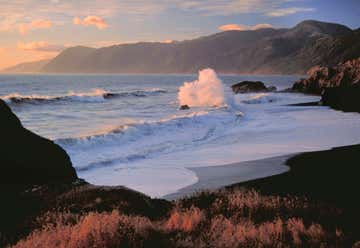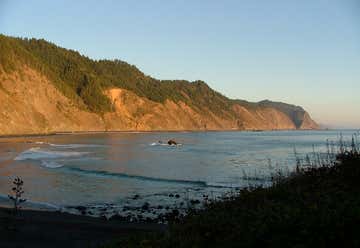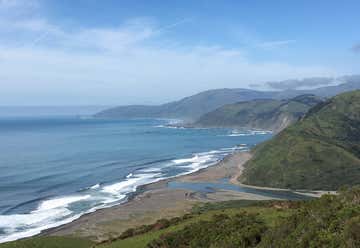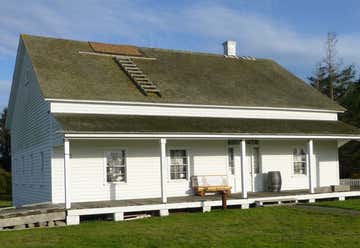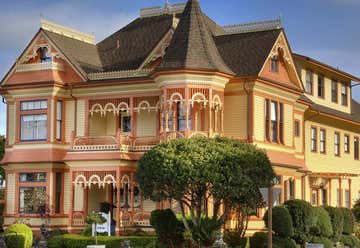There's a good reason California's Lost Coast remains, well... lost. It offers up some of the most unbelievably phenomenal rugged beauty in the country, but it's just a little too rugged for paved roads. When the Pacific Coast Highway was being built, engineers chose to go around this 100-mile section of coast, unable and unwilling to tame the wild landscape. It's not a trip for the faint of heart, but those who dare to explore will be rewarded with some of the most amazing (and untouched) scenery in the country-- worth every bit of effort.
The Pacific Coast Highway veers inland to follow the Eel River near Ferndale. The coast can be accessed from a few points just south of the town. The first chance to head for the Lost Coast is Mattole Road. At the end of the road, you can hike through forests and fields the rest of the way down to the shore for sweeping views.

Photo Credit: Flickr/Bureau of Land Management
Another popular spot on the Lost Coast is the King Range National Conservation Area. You can immerse yourself in the Lost Coast's natural beauty with hiking, fishing, surfing, beach-coming, and seal spotting. You'll see that here, the mountains meet the sea, rising up straight out of the water in places. The shore's landscape can be quite rugged... but there are plenty of little coves and hidden beaches that are just waiting to be discovered by anyone willing to brave the wilderness.

Photo Credit: Flickr/Bureau of Land Management
The Lost Coast is known for its dramatic black sand beaches, made from a dark sandstone called "greywacke". The drive out to the beach is a winding drive that takes about an hour, but it's absolutely gorgeous. It's more popular with hikers and surfers than it is with beachgoers since it's not exactly the best swimming and sun-tanning spot. If you're looking for a quiet place for a really epic walk on the beach, this is the spot to do it.

Photo Credit: Flickr/Sharon Hahn Darlin
If you find yourself wanting civilization on the Lost Coast, head to Shelter Cove. The little town is the gateway to the Lost Coast Trail and is tucked away between the ocean and the foot of the King Mountains. Spot whales and seals, tidepool at the black sand beach, visit some of the wineries nearby and just relax. There is a nice campground and you can find some quaint little inns where you can stay. It's also a great place to grab a bite to eat, if all of the hiking and driving has you working up an appetite. The campground actually has a killer deli onsite!

Photo Credit: Flickr/Frank Schulenburg
Northern California is also known for its massively majestic redwoods, and the Lost Coast takes you past a grove that is home to the "Candelabra Trees", which got their name from their branches, which grow straight up. The mysterious trees, with their many branches that bend, twist, and turn as they reach up towards the sky, almost appear to be the work of Photoshop, but they're very real. The phenomenon that causes this specific grove of redwoods to grow in the unique candelabra shape is rare-- scientists believe that the strong, salty breezes from the nearby ocean, as well as the stand's location on a cliff account for the special branches. The Shady Dell Trail should take you past these majestic and unique trees.

Photo Credit: Flickr/blmcalifornia
Another spot where you can access the coast is at Sinkyone Wilderness State Park. This sprawling park makes up a good chunk of the Lost Coast itself, and it's nice to know that it's been preserved as a park and will remain unspoiled. There are beaches, trails, creeks, cliffs, and forests to explore, but remember... this is a wilderness. You'll need to bring in water, food, a full tank of gas, and all of your supplies, especially if you're camping.

Photo Credit: Flickr/blmcalifornia
The Lost Coast Trail is a hike along the shore that starts near Shelter Cove and ends at the Mattole Recreation Area. Another remote bit of wilderness, this reserve is marked by the Mattole River, which empties into the ocean here. It's a marshy landscape, where many migrating birds nest. There are some campsites here if you're looking to camp on the beach. Falling asleep to the sound of the waves just outside your door sounds pretty divine, doesn't it?

Photo Credit: Flickr/Bureau of Land Management
As you head back north along the coast, you can stop in Eureka at Fort Humboldt State Historical Park. It's a scenic stop on a bluff overlooking the sea where you can learn about the history of Northern California, from its Gold Rush days to the logging industry that threatened the stunning forests that blanket the coast and mountains. There's a ton of history to experience here, including vintage railroad displays and a museum dedicated to logging, so leave some time to explore.
End your adventure in Ferndale. This town is the northern gateway to the Lost Coast, and it's brimming with vintage charm. The downtown district features tons of ornate Victorian buildings that look like life-sized dollhouses. In fact, the entire town has been declared a California Historical Landmark. Museums, historic homes and storefronts, little shops, cozy little cafes, and some top-notch hotels make this the perfect place to end your Lost Coast trip. Make the postcard-worthy Gingerbread Mansion Inn your home base. The Inn's attention to detail doesn't stop with the elaborate and colorful architecture and exterior: The picture perfect English garden, afternoon tea, spa offerings, and spotless rooms make it the perfect place to really get a feel for Ferndale.

Photo Credit: Flickr/Stephen Colebourne
If you're willing to head off the beaten path of the PCH and get a little lost, you'll be treated to an experience that few are lucky to have. Lace up your hiking shoes, wrap yourself up in a sweater, top off your gas tank, set your sights on the coast, and get ready for an unforgettable adventure.


